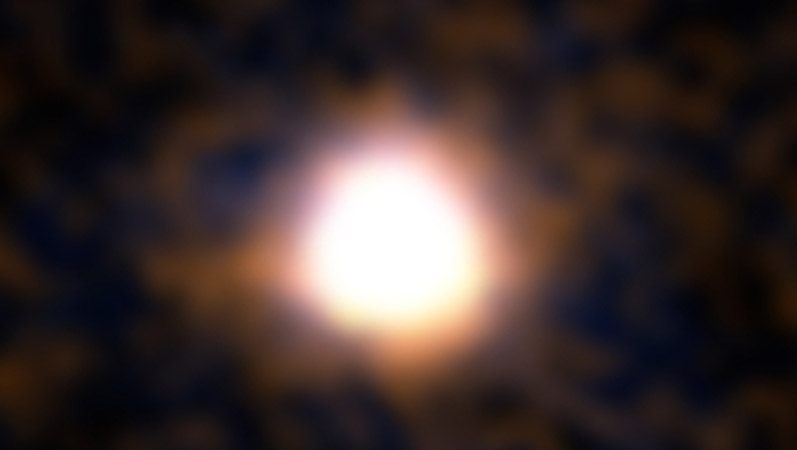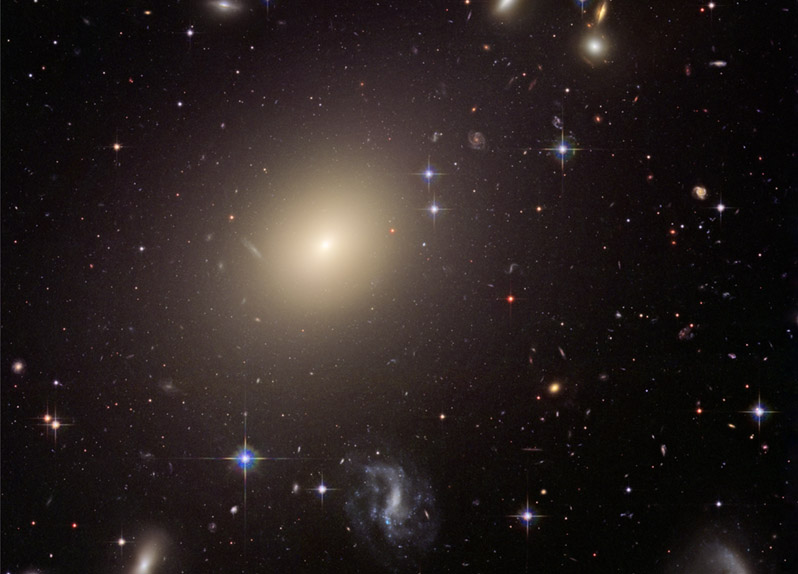
An international team of astronomers said on December 10, 2020, that they’ve been able to piece together the growth and rapid evolution of a large galaxy in the early universe. This galaxy, known as C1-23152, existed at a time when the universe was just 1.8 billion years old (in contrast to its current estimated age of about 13.8 billion years). The astronomers acquired 17 hours of observations – coordinated by Paolo Saracco of the Istituto Nazionale di Astrofisica in Italy – using the University of Arizona’s Large Binocular Telescope. These researchers learned that this galaxy formed in only 500 million years, which may sound like a long time, but is a very short time on a cosmic scale to give rise to some 200 billion suns. To do it, the galaxy must have produced as many as 450 stars per year, or more than one star per day.
In contrast, our Milky Way galaxy is thought to produce one or two new stars every year.
The 2021 lunar calendars are here! Order yours before they’re gone. Makes a great gift!
These astronomers said the new observations show massive galaxies can form quickly and without the aid of small galaxy mergers. That’s a steep departure from the currently popular model of galaxy formation, called the hierarchical model. That model calls for smaller galaxies to form first and to merge later on to form massive galaxies.
C1-23152 does not fit the model. And that fact has astronomers rethinking their theories.
These researchers’ paper is published in the peer-reviewed journal, The Astrophysical Journal.
In its active star-forming period, C1-23152 was producing stars at a rate 300 times that of the Milky Way’s current rate of star formation. Lead researcher Paolo Saracco said:
We measured, for the first time, the age of the stars, their metals content and the velocity at which they move in a very massive galaxy, so far from us that its light took almost 12 billion years to reach us. We see this galaxy when the universe was less than 13% of its current age.
Therefore, our measurements tell us about the properties of a very massive galaxy when it was very young, just formed, allowing us to reconstruct its formation process. We found that all its stars, about 200 billion, formed in about 500 million years – an incredibly short time corresponding to less than 4 hundredths of the age of the universe – at a rate of more than one per day. For comparison, our galaxy, the Milky Way, forms about 2 stars per year.

Large galaxies like C1-23152 account for just 1/3 of the number of galaxies in the total universe, but they contribute more than 70% of the mass of the universe’s stars. Understanding the nature and formation of massive galaxies through modeling alone has proven difficult for researchers in the past because it is based on observations of the local universe and can’t account for conditions present in the early universe or the evolutionary phenomena that early galaxies undergo throughout their lives.
The scientists believe that studying galaxies in the early universe, as close as possible to the time when they formed most of their mass, could unlock the mysteries of their evolutionary histories and alter scientific models. Adriana Gargiulo, also a researcher at the Istituto Nazionale di Astrofisica in Italy and a co-author on the study, said:
Understanding whether the scenario that describes the formation of CQ-23152 is a particular case or whether, on the contrary, it is what happens for most massive galaxies in the universe is of fundamental importance since this would require a profound revision of galaxy formation models.

Stars are born as the result of interstellar gas being placed under extreme amounts of pressure. Self-formation of massive galaxies like C1-23152 would require the right mix of conditions and significant amounts of interstellar gas. The scientists believe that if in fact C1-23152 isn’t a singular case, then violent collisions of gas clouds in the early universe could have produced just the right conditions for rapid, independent massive galaxy formation. Saracco said:
In the early universe gas was present in large quantities in the form of clouds. We believe that two, or more, massive clouds of primordial gas … collided, triggering violent and massive star formation processes.
While researchers are now starting to unravel how C1-23152 and other massive galaxies in the early universe may have formed and behaved throughout their early evolutions, the future of these galaxies is yet uncertain. Saracco said:
We are not able to describe in detail what ‘will’ happen to this galaxy. But its properties, being extremely similar to the properties of galaxies we observe in the present-day universe, suggest that it will not change much in its future.
C1-23152 appears to astronomers today as a regular spheroidal galaxy with a surface brightness typical of elliptical galaxies in the local universe.

Bottom line: A massive galaxy observed in the early universe formed rapidly and on its own, challenging the accepted model that massive galaxies are always formed through small galaxy mergers.











